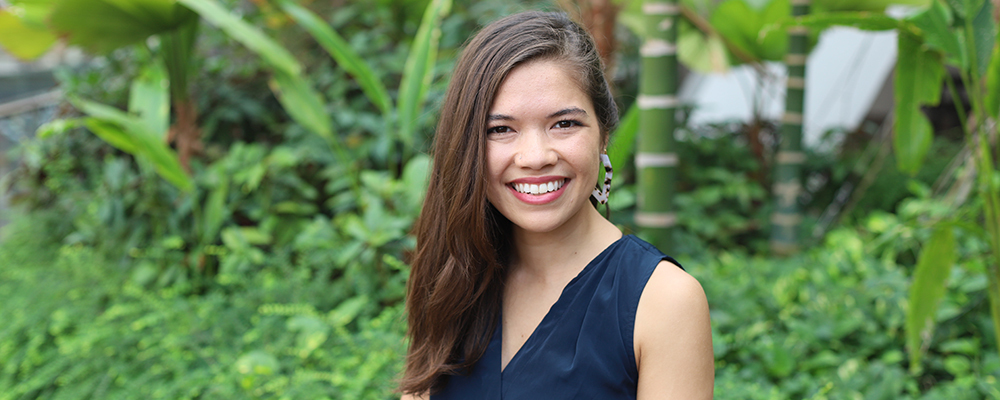Translating earthquake science into engineering-based risk and loss assessments is an important tool for disaster management decision-making. The ability to quantify risk in a way that prioritizes vulnerable communities and acknowledges disproportionate risk is still advancing, however. Sabine Loos has joined the Natural Hazards Center to explore how to approach this challenge for more equitable outcomes. Loos comes to the Center as a part of partnership with the U.S. Geological Survey (USGS) Mendenhall Research Fellowship Program to develop socially equitable earthquake risk strategies and solutions.
Loos recently sat down to answer some questions about her work, the Mendenhall Program, and how the two came together to inspire her fellowship. Her responses are below.
Your work has focused on creating thoughtful, human-centered metrics that incorporate more than just economic or physical data. Can you briefly describe why that’s important?
Historically marginalized and vulnerable communities face disproportionate impacts from earthquakes and other natural hazards, partly due to a bias in the metrics developed to support natural hazards decisions. While the natural hazards community and USGS have made a ton of progress developing ways to quantify risk, the focus has been on what is easiest to measure without differentiating or acknowledging who experiences those impacts, let alone the important and harder-to-measure effects from disasters.
An example is the concept of economic loss in earthquakes, which measures the impact as the dollar amount a property’s value “lost” due to an earthquake—those who had higher property values before the earthquake (and consider that some people don’t own property at all) will be shown to be more impacted after an event. These types of metrics can underlie impactful planning decisions, like post-earthquake transfers of aid or funding, which research has shown can increase the wealth divide rather than reduce it. There is an increasing amount of data ranging from surveys to crowdsourcing to predictive methods, that can help us go beyond typical earthquake risk metrics to more nuanced metrics that acknowledge the disproportionate risk of vulnerable populations.
How will the Mendenhall Fellowship help you advance this work?
The goal of our project is to develop more human-centered metrics of loss. By human-centered, I mean metrics that consider human dimensions but that also concentrate on prioritizing equity in disaster planning. This is a large task and will require the expertise of the many disciplines that work in the natural hazards space, including social scientists, engineers, and physical scientists. It will also require listening to the opinions of the many disaster organizations that benefit from USGS earthquake information.
I am so excited to work on this project through the Mendenhall Fellowship, because I get to work with talented researchers at the Natural Hazards Center and the USGS who approach this topic in a transdisciplinary way. One of the most exciting parts about our work, though, is that we can incorporate USGS earthquake information users that prioritize vulnerable communities in their work. Ultimately, the solutions we identify will lead to improvements in the public resources USGS shares after earthquakes.
What made you feel the fellowship would be a good fit for your work? Do you have any advice for others who are considering it?
Throughout my PhD, I saw how many folks around the world look to the USGS whenever an earthquake happens. I slowly learned about the USGS mission and admired how the Earthquake Hazards Program has been able to develop globally available information while being transparent and open with the methods and data they apply.
The Mendenhall program is an opportunity to work with USGS scientists and collaborators from academic institutions on research aligned with USGS science strategy and mission. When I learned about it, I knew it could be a perfect opportunity for me use my work to help extend their products in a way that could have tangible impact. The USGS is so broad and we work on so many hazards besides earthquakes. Everyone is eager to incorporate convergent research that extends beyond just one specific hazard.
I’d encourage anyone interested in pursuing the Mendenhall Fellowship to explore it further. Find researchers whose work interests you and start a conversation before the application period rolls out. Making those relationships ahead of time will increase your chances of finding a project and team that align with your values and your research interests, and can ultimately help you get a fellowship. I’m also happy to share my experience with those who may not know where to start.
Loos recently completed a PhD in engineering jointly between Stanford University and Nanyang Technological University in Singapore. She is the co-chair of the International Sociological Association Research Committee on Disasters (ISA-RC39) Researchers Meeting and co-founder of the Risk and Resilience DAT/Artathon. After completing her fellowship in 2023, she will serve as an assistant professor in the department of civil and environmental engineering at the University of Michigan. Find more information on Loos’ research and other activities on her website.
